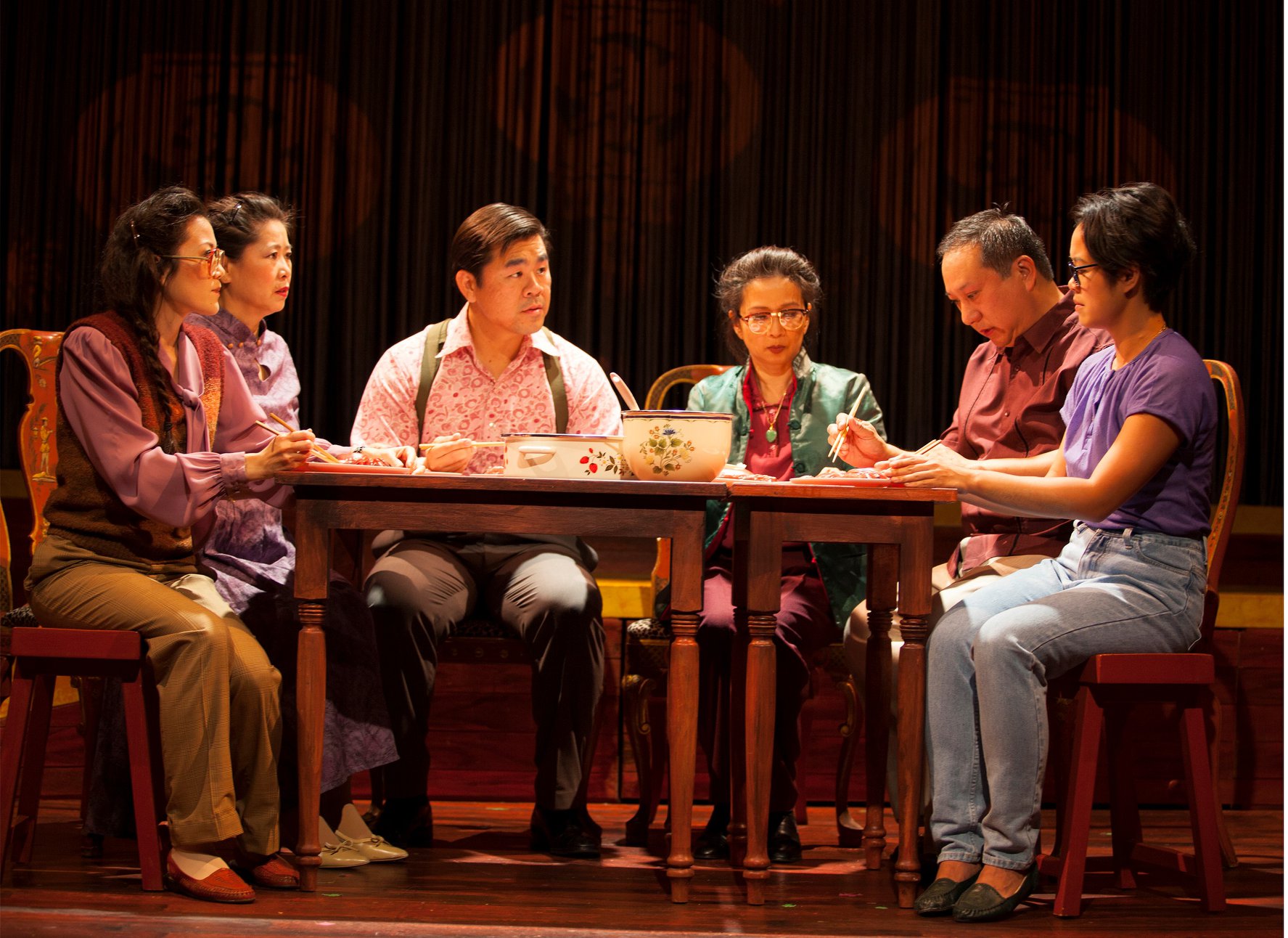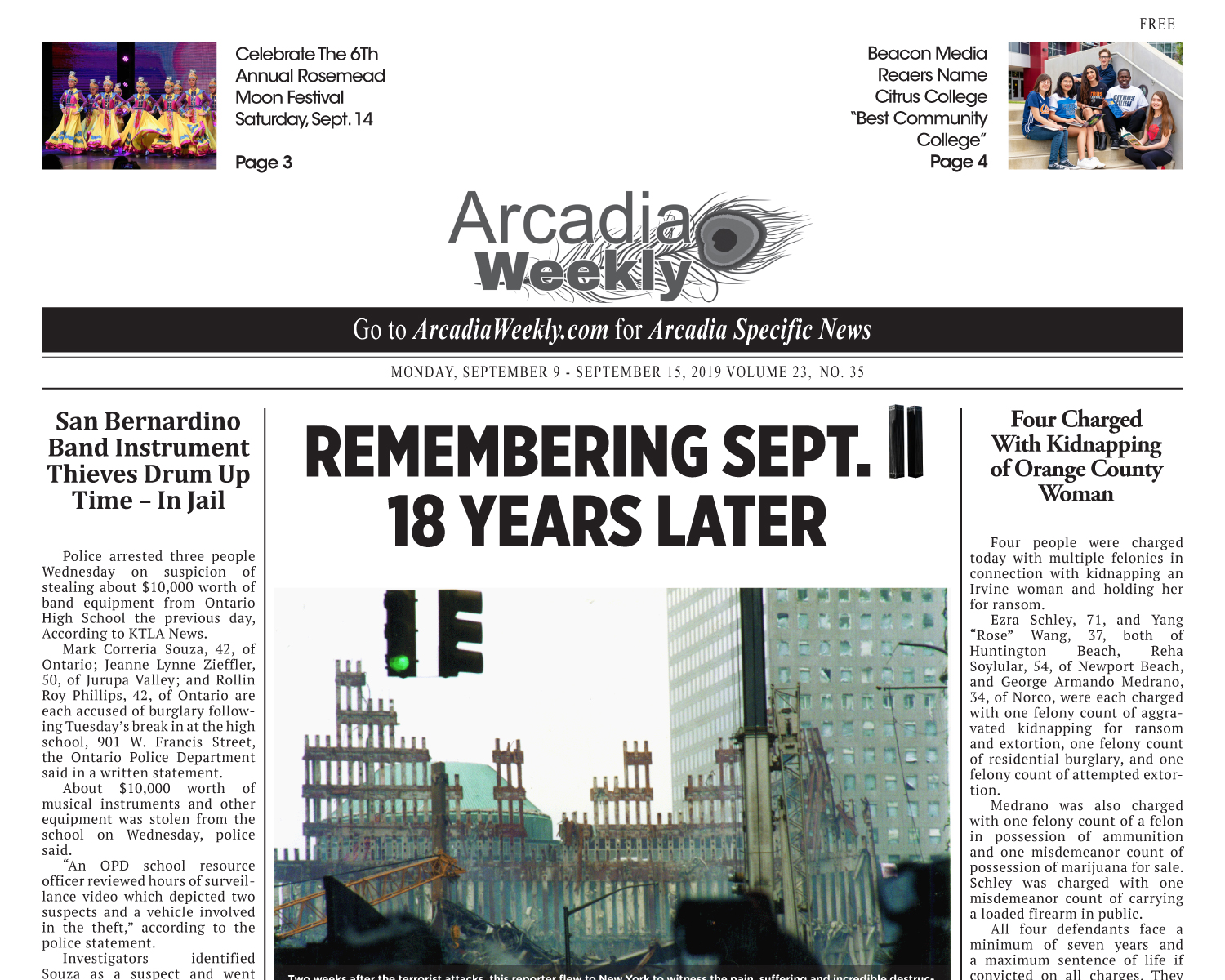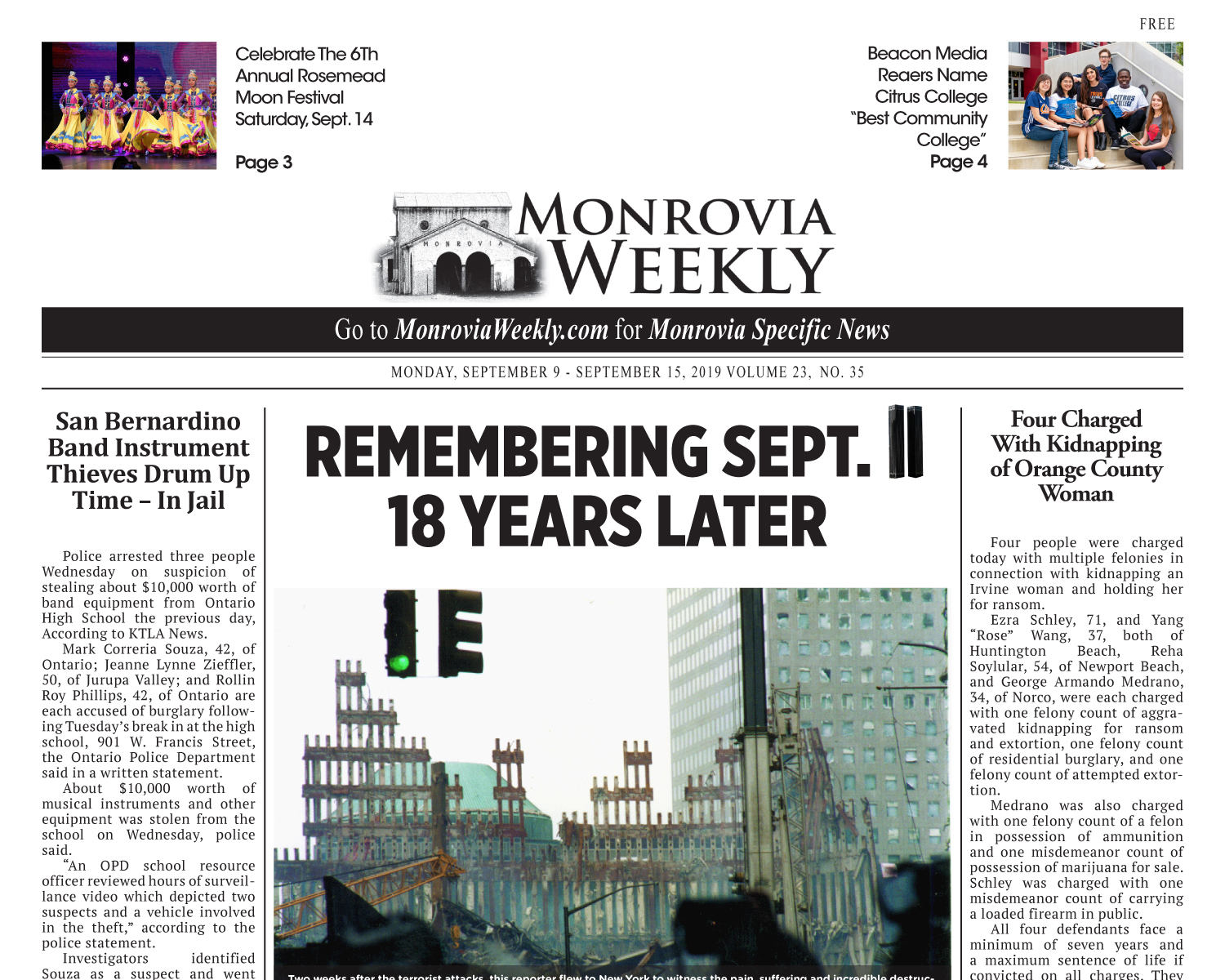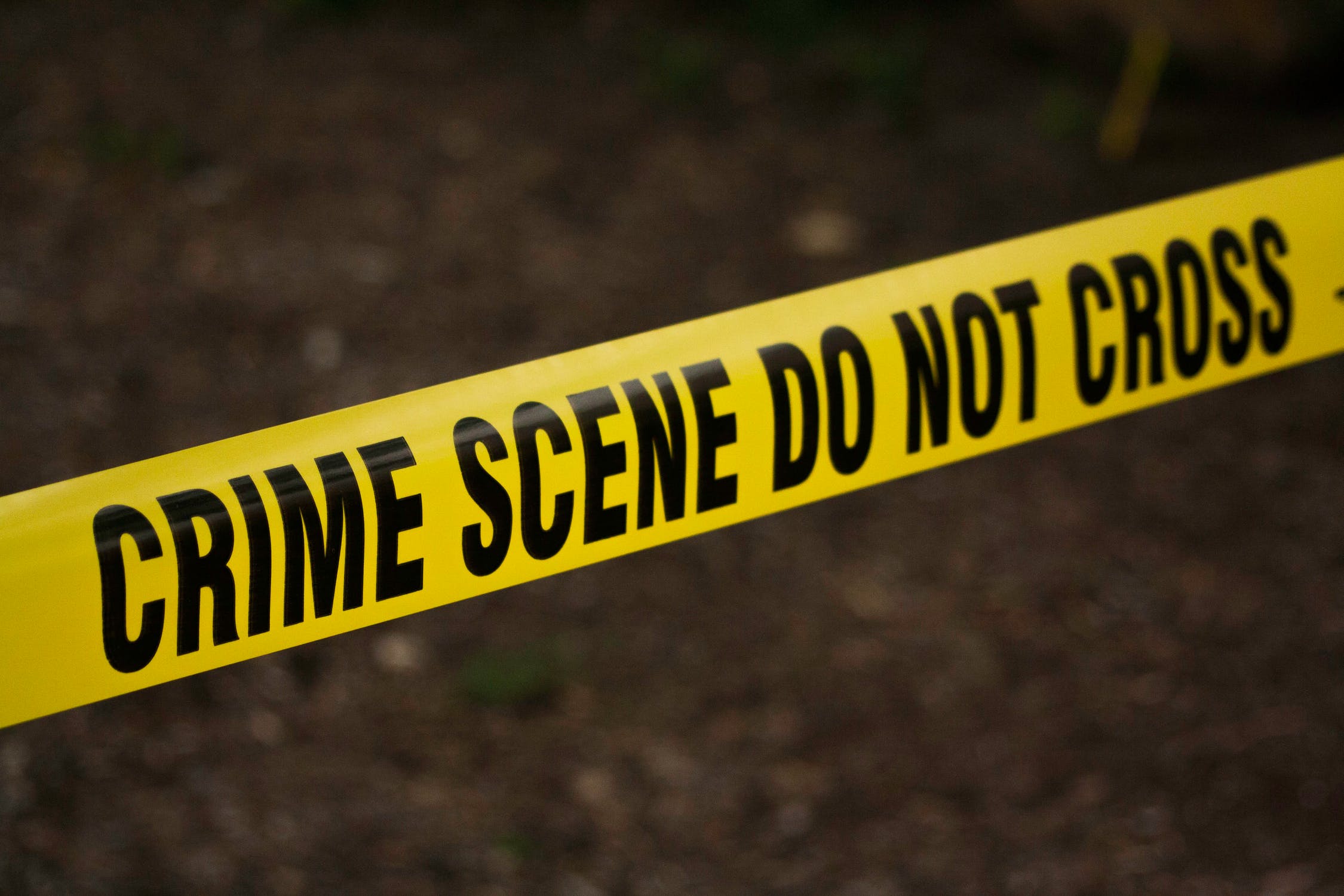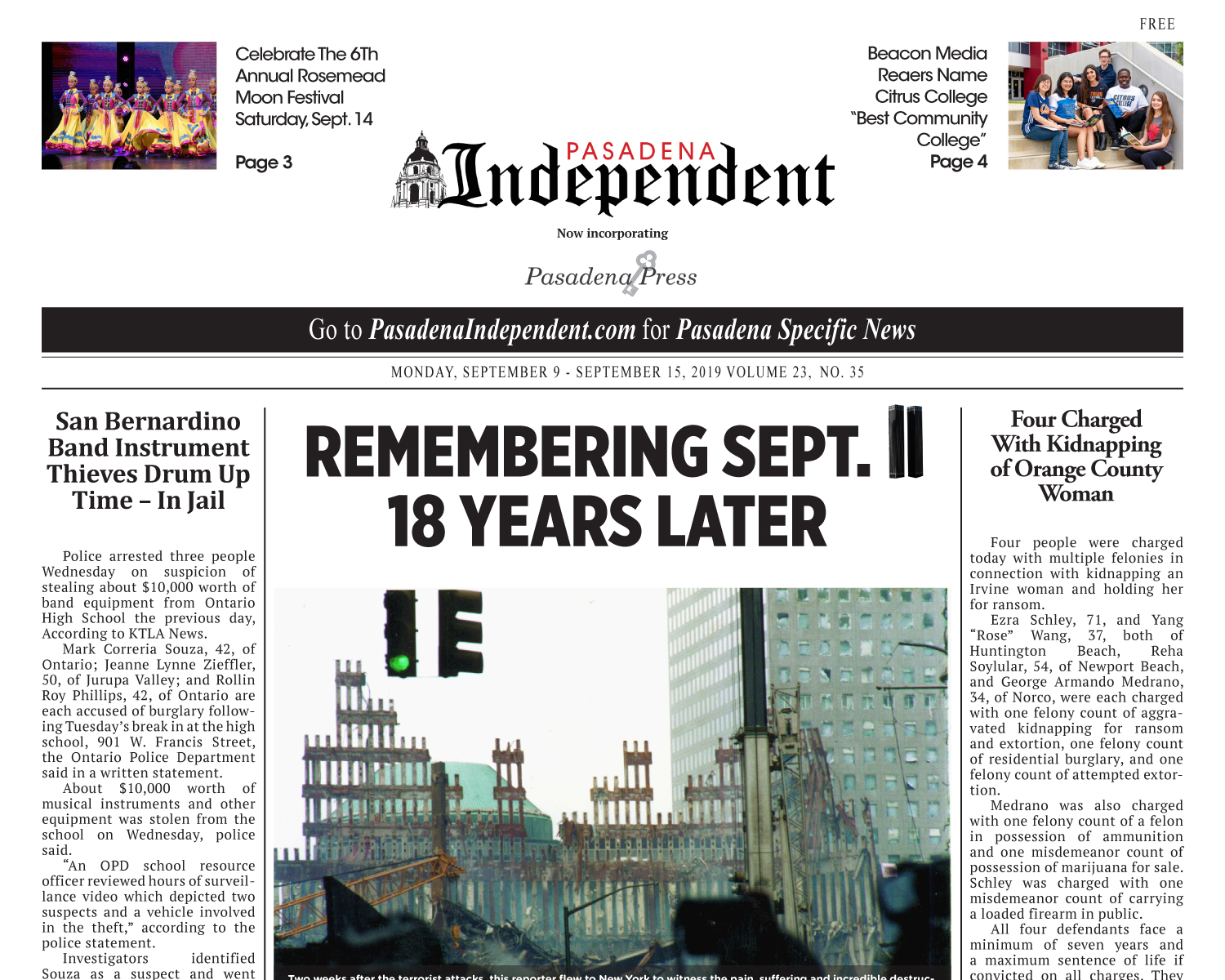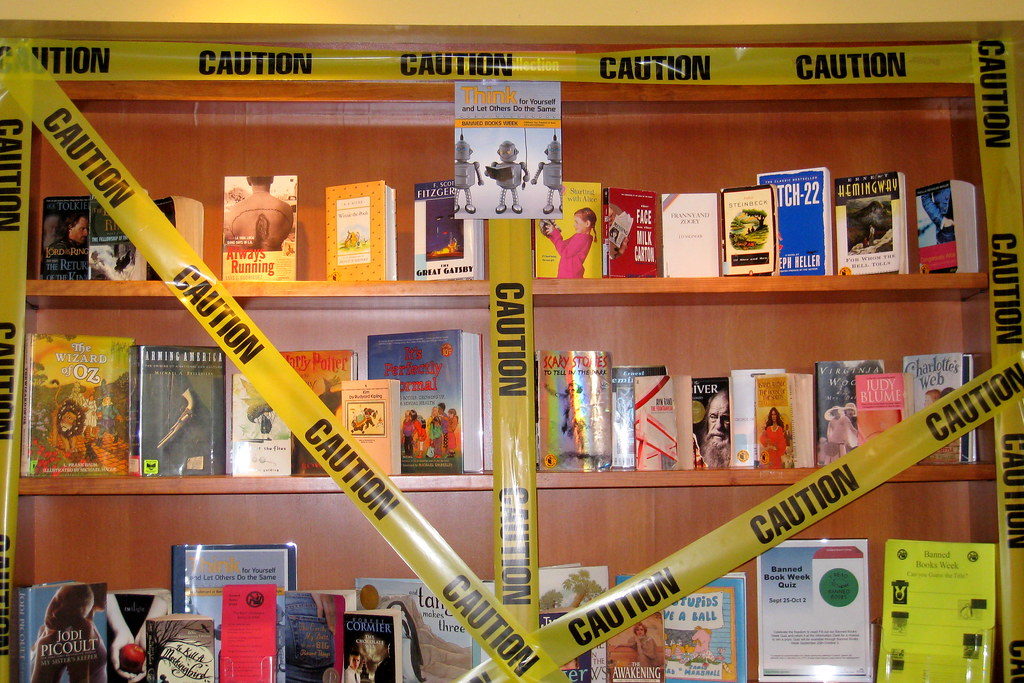
Freedom to read celebration Sept. 22-28
By Terry Miller
This past week a story caught my attention and therefore spawned this article.
A Catholic school in Nashville, Tenn. decided to remove the Harry Potter series of books from the school library’s shelves.
“These books present magic as both good and evil, which is not true,” his letter reads. “The curses and spells used in the books are actual curses and spells; which when read by a human being risk conjuring evil spirits into the presence of the person reading the texts,” wrote Rev. Dan Reehil, pastor of St. Edward Catholic School, in an email.
This brings us to Banned Books Week 2019, the annual celebration of the freedom to read, to be held Sept. 22-28. The theme of this year’s event is “Censorship Leaves Us in the Dark. Keep the Light On!”
It’s really unimaginable that the beautiful work of Maya Angelou “I Know Why the Caged Bird Sings” has been targeted as hundreds, if not thousands of books, over the years have been battered by fanatics who believe it is their right to tell you what to read and listen to.
Banned Books Week is perhaps the most important opportunity during the year for advocates — publishers, booksellers, librarians, educators, journalists, and readers — to explain why we must defend everyone’s right to choose what they want to read, listen to and view.
The Banned Books Week Coalition will support indie bookstores’ celebration with programming ideas, promotional materials, and other resources available at bannedbooksweek.org.
Since it was launched in 1982, Banned Books Week has been shining a light on censorship, and the fight for free expression is as urgent as ever. In recent years, attacks on the right to read have become bolder, as legislatures have introduced bills that would eliminate crucial safeguards for the right to read books that some people find offensive.
Some books were burned by a religious activist in Orange City, Iowa, in October to protest the city’s OC Pride event. The top 11 challenged books of the year 2018 – according to American Library Association- are:
- “George” by Alex Gino (Scholastic)
Reasons: banned, challenged, and relocated because it was believed to encourage children to clear browser history and change their bodies using hormones, and for mentioning “dirty magazines,” describing male anatomy, “creating confusion,” and including a transgender character. - “A Day in the Life of Marlon Bundo” by Jill Twiss, illustrated by EG Keller (Chronicle Books)
Reasons: banned and challenged for including LGBTQIA+ content, and for political and religious viewpoints. - Captain Underpants series, written and illustrated by Dav Pilkey (Scholastic)
Reasons: series was challenged because it was perceived as encouraging disruptive behavior, while Captain Underpants and the Sensational Saga of Sir Stinks-A-Lot was challenged for including a same-sex couple. - “The Hate U Give” by Angie Thomas (Balzer + Bray)
Reasons: banned and challenged because it was deemed “anti-cop,” and for profanity, drug use, and sexual references. - “Drama,” written and illustrated by Raina Telgemeier (GRAPHIX)
Reasons: banned and challenged for including LGBTQIA+ characters and themes. - “Thirteen Reasons” Why by Jay Asher (Razorbill)
Reasons: banned, challenged, and restricted for addressing teen suicide. - “This One Summer” by Mariko Tamaki, illustrated by Jillian Tamaki (First Second)
Reasons: banned and challenged for profanity, sexual references, and certain illustrations. - Skippyjon Jones series, written and illustrated by Judy Schachner (Dutton Books for Young Readers)
Reason: challenged for depicting stereotypes of Mexican culture. - “The Absolutely True Diary of a Part-Time Indian” by Sherman Alexie (Little, Brown Books for Young Readers)
Reasons: banned and challenged for sexual references, profanity, violence, gambling, and underage drinking, and for its religious viewpoint. - “This Day in June” by Gayle E. Pitman, illustrated by Kristyna Litten (Magination Press)
Reason: challenged and burned for including LGBTQIA+ content. - “Two Boys Kissing” by David Levithan (Knopf Books for Young Readers)
Reason: challenged and burned for including LGBTQIA+ content.
“To Kill a Mockingbird” and “The Catcher in the Rye” were banned when they were first released. But that was the 1960s, a time when racial segregation was still legal and sex education was barred from schools—would we think of banning books for progressive content today? Oh yes, you can bet your library card on that.
Thankfully, in the digital age, it’s virtually impossible to ban books. In fact, banning or censoring only helps elevate the book or subject to a new found glory amid the hullabaloo.
And controversy piques curiosity.
Schools that censor often produce the exact opposite outcome. A ban gives a book new light, even if only momentarily, which equates to more sales, more media, and more legend. The politics of the book become bigger than the content itself.
For nearly as long as the written word has existed, it has been a target for censorship. Religion was the most frequently cited reason for the censorship of written works. In 14th century England, for example, reading the Wycliff Bible was forbidden by the clergy for fear that the translation had corrupted or misinterpreted the original text. In the 16th century, the Roman Catholic Church placed Machiavelli’s “The Prince” on the Index of Prohibited Books in the “banned absolutely” category for its “heretical” content.
Reading translations of the Bible was once forbidden. Today, parents and ministers often object to works which discuss topics such as sex and evolution or witchcraft or occult themes.
Let’s not forget music. Songs that have been banned or “challenged” include: “Brown Eyed Girl,” Van Morrison (June, 1967); “Strange Fruit,” Billie Holiday (1939); “Will You Still Love Me Tomorrow,” The Shirelles (November, 1960); “Sailing,” Rod Stewart (June 1972);
“Hey Joe,” Jimi Hendrix (Dec. 16, 1966); “God Only Knows,” The Beach Boys (July 11, 1966); “In the Air Tonight,” Phil Collins (Jan. 5, 1981); “Lola,” The Kinks (June 12, 1970); “Louie, Louie,” the Kingsmen (May 1963); “Light My Fire,” The Doors (September 1967); “Imagine,” John Lennon (Oct. 11, 1971); “God Save the Queen,” The Sex Pistols (May 27, 1977); “(I Can’t Get No) Satisfaction,” The Rolling Stones (June 6, 1965); “Lucy in the Sky With Diamonds,” The Beatles (June 1, 1967) and of course most recently the controversy over “Baby it’s Cold Outside” opened up another kettle of really stinky fish in an otherwise great ocean of lyrics and independent thought, albeit full of plastic.
Censorship, the suppression of words, images, or ideas that are “offensive,” happens whenever some people succeed in imposing their personal political or moral values on others. Censorship can be carried out by the government as well as private pressure groups. Censorship by the government is unconstitutional, although it seems to rear its ugly head quite often.
Perhaps the overwhelming desire to censor goes back to our Puritan roots. FEAR.
According to a study by the ACLU “There is, in fact, virtually no evidence that fictional violence causes otherwise stable people to become violent. And if we suppressed material based on the actions of unstable people, no work of fiction or art would be safe from censorship. Serial killer Theodore Bundy collected cheerleading magazines. And the work most often cited by psychopaths as justification for their acts of violence is the Bible.”
In general, there are four major types of censorship: withholding information, destroying information, altering or using selective information and self-censorship. Withholding information is a common form of censorship used by many governments throughout history.
The American Library Association (ALA) condemns censorship and works to ensure free access to information. For more information on ALA’s efforts to condemn censorship, please explore Banned Books Week: Celebrating Your Freedom to Read.


